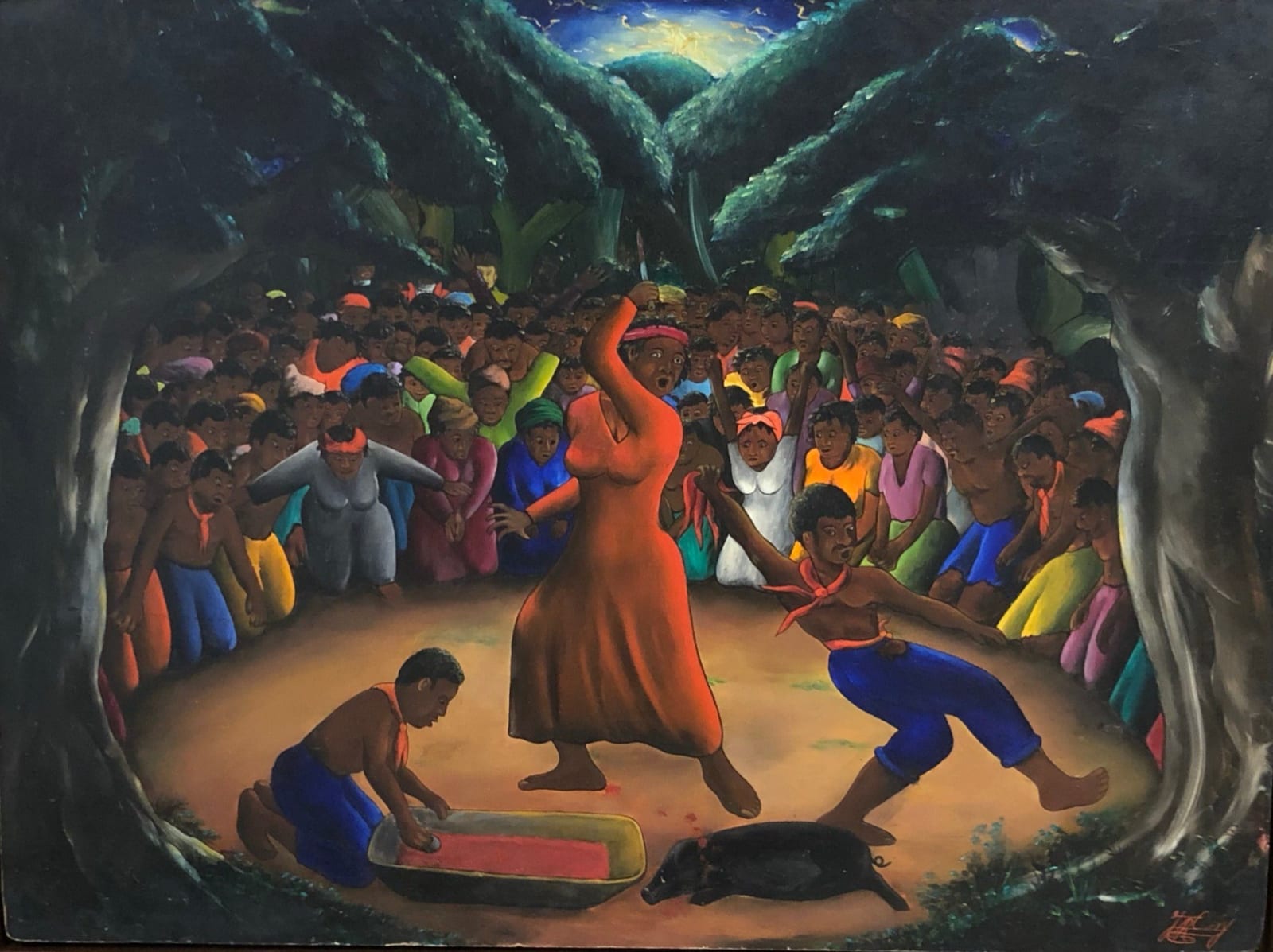Jacques-Richard Chéry Haitian, b. 1928
Ceremonie du Bois Caiman,, c. 1960's
Oil on masonite
29 3/4 x 40 inches
Jacques Richard Chery, an artist popularly recognized for playful paintings of scale where people carry vibrant oversized fruit, would also present historic figures and events. In Ceremonie du Bois Caiman, Chery...
Jacques Richard Chery, an artist popularly recognized for playful paintings of scale where people carry vibrant oversized fruit, would also present historic figures and events. In Ceremonie du Bois Caiman, Chery reveals the moment le cochon creole is offered as sacrifice to Ezili Dantor. Taken by the spirit, Cécile Fatiman’s intense stare contrasts with the downward gaze of the 200 gathered at the official start of the Haitian Revolution. For this scene, Chery abandons the “cuteness” appeal of what made his art so internationally salable. His focus is now on the sanctified blood of the cochon (pig) believed to hold magical powers. In Chery’s interpretation, gatherers make a clearing to highlight the sacrificial moment. Under a cloudy but lite sky, the mood is somber. However for this revolution to succeed they willed themselves invincible. And so it was, the successfully fateful night of August 14, 1791 that would launch a revolution taking 17 years to complete.
1
of
2
